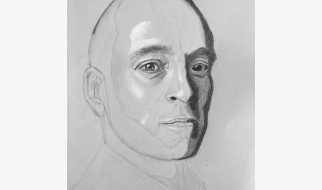
According to Wikipedia, Entropy refers to disorder or uncertainty.
Definition: Entropy is the measures of impurity, disorder or uncertainty in a bunch of examples.
What an Entropy basically does?
Entropy controls how a Decision Tree decides to split the data. It actually effects how a Decision Tree draws its boundaries.
The Equation of Entropy:
 Equation of Entropy
Equation of Entropy
What is Information gain and why it is matter in Decision Tree?
Definition: Information gain (IG) measures how much ?information? a feature gives us about the class.
Why it matter ?
- Information gain is the main key that is used by Decision Tree Algorithms to construct a Decision Tree.
- Decision Trees algorithm will always tries to maximize Information gain.
- An attribute with highest Information gain will tested/split first.
The Equation of Information gain:
 Equation of Information gain
Equation of Information gain
To understand Entropy and Information gain, lets draw a simple table with some features and labels.
This example taken from Udacity (Introduction to Machine Learning) course
Here in this table,
- Grade, Bumpiness and Speed Limit are the features and Speed is label.
- Total four observation.
First, lets work with Grade feature
In the Grade column there are four values and correspond that values there are four labels.
Lets consider all the labels as a parent node.
SSFF => parent node
So, what is the entropy of this parent node ?
Lets find out,
firstly we need to find out the fraction of examples that are present in the parent node. There are 2 types(slow and fast) of example present in the parent node, and parent node contains total 4 examples.
1. P(slow) => fraction of slow examples in parent node2. P(fast) => fraction of fast examples in parent node
lets find out P(slow),
p(slow) = no. of slow examples in parent node / total number of examples
 fraction of P(slow) examples
fraction of P(slow) examples
Similarly the fraction of fast examples P(fast) will be,
 fraction of P(fast) examples
fraction of P(fast) examples
So, the entropy of parent node:
 entropy of parent nodeEntropy(parent) = – {0.5 log2(0.5) + 0.5 log2(0.5)} = – {-0.5 + (-0.5)} = 1
entropy of parent nodeEntropy(parent) = – {0.5 log2(0.5) + 0.5 log2(0.5)} = – {-0.5 + (-0.5)} = 1
So the entropy of parent node is 1.
Now, lets explore how a Decision Tree Algorithm construct a Decision Tree based on Information gain
First lets check whether the parent node split by Grade or not.
If the Information gain from Grade feature is greater than all other features then the parent node can be split by Grade .
To find out Information gain of Grade feature, we need to virtually split the parent node by Grade feature.
 Virtually split by Grade
Virtually split by Grade
Now, we need to find out the entropy both of this child nodes.
Entropy of the right side child node(F) is 0 , because all of the examples in this node belongs to the same class.
Lets find out Entropy of the left side node SSF:
In this node SSF there are two type of examples present, so we need to find out the fraction of slow and fast example separately for this node.
P(slow) = 2/3 = 0.667P(fast) = 1/3 = 0.334
So,
Entropy(SSF) = – {0.667 log2(0.667) + 0.334 log2(0.334)} = – {-0.38 + (-0.52)} = 0.9
we can also find out the Entropy by using scipy library.
Now, we need to find out Entropy(children)with weighted average.
Total number of examples in parent node: 4 ” ” ” ” ” left child node: 3 ” ” ” ” ” right child node: 1
Formula of Entropy(children) with weighted avg. :
[Weighted avg]Entropy(children) = (no. of examples in left child node) / (total no. of examples in parent node) * (entropy of left node) + (no. of examples in right child node)/ (total no. of examples in parent node) * (entropy of right node)
Entropy(children) with weighted avg. is = 0.675
So,
 Equation of Information gainInformation gain(Grade) = 1 – 0.675 = 0.325
Equation of Information gainInformation gain(Grade) = 1 – 0.675 = 0.325
Information gain from Grade feature is 0.325 .
Decision Tree Algorithm choose the highest Information gain to split/construct a Decision Tree. So we need to check all the feature in order to split the Tree.
Information gain from Bumpiness
 virtually split by Bumpyness
virtually split by Bumpyness
The entropy of left and right child nodes are same because they contains same classes.
entropy(bumpy) and entropy(smooth) both equals to 1.
So, entropy (children) with weighted avg. for Bumpiness:
[weighted avg.]entropy(children) = 2/4 * 1 + 2/4 * 1 = 1
Hence,
Information gain(Bumpiness) = 1 – 1 = 0
Till now we have to Information gain:
IG(Grade) => 0.325IG(Bumpiness) => 0
Information gain from SpeedLimit
 virtually split by SpeedLimit
virtually split by SpeedLimit
The entropy of left side child node will be 0, because all of the examples in this node belongs to the same class.
Similarly, entropy of right side node is 0.
Hence, Entropy(children) with weighted avg. for SpeedLimit:
[weighted avg.] entropy(children) = 2/4 *0 + 2/4 *0 = 0
So, Information gain from SpeedLimit:
Information gain(SpeedLimit) = 1 – 0 = 1
Final Information gain from all the features:
IG(Grade) => 0.325IG(Bumpiness) => 0IG(SpeedLimit) => 1
As we know that, Decision Tree Algorithm construct Decision Tree based on features that have highest Information gain
So, here we can see that SpeedLimit has highest Information gain. So the final Decision Tree for this datasets will be look like this:
 Final Decision Tree
Final Decision Tree


